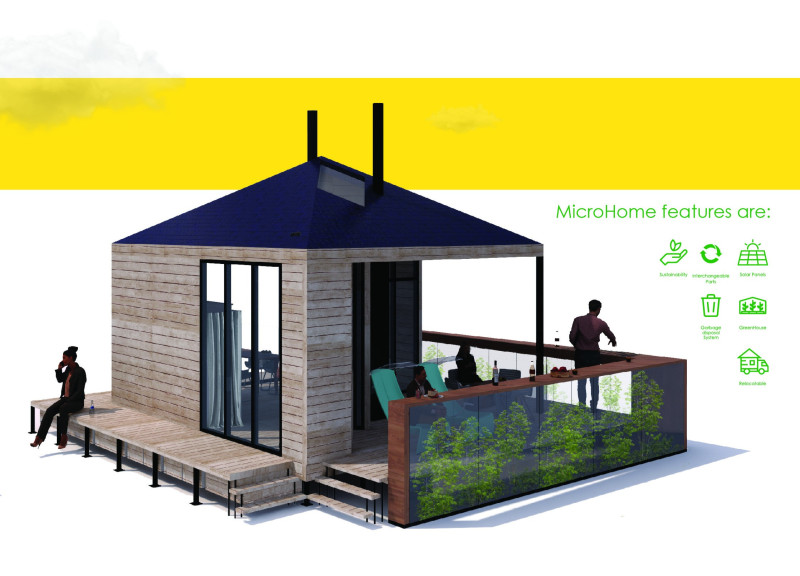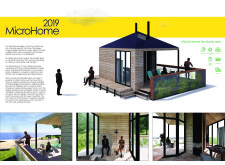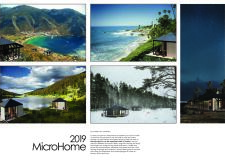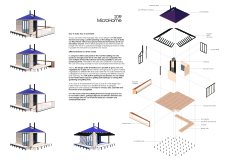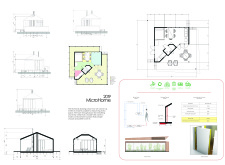5 key facts about this project
The MicroHome project addresses the growing need for efficient housing solutions that prioritize sustainability in modern living. Located in a variety of landscapes, the design aims to provide a compact yet functional living environment. The overall concept focuses on minimalism, making the most of limited space while incorporating essential amenities and features for everyday life.
Architectural Features
The MicroHome encompasses a living area of 21 square meters, along with an extra 38 square meters designated for outdoor use. The layout is thoughtfully designed to include a bedroom, living room, bathroom, kitchen, and storage facilities. This organization ensures that the space remains functional and comfortable, allowing residents to make the most of their surroundings without feeling cramped.
Flexibility and Adaptability
Flexibility is a significant aspect of the MicroHome. The design allows for easy relocation and the connection of multiple units, enabling occupants to adjust their living space according to their needs. This versatility is well-suited for both long-term residency and short-term use, making it a practical solution for various lifestyles in changing environments.
Sustainability Elements
The use of renewable energy is a primary focus of the MicroHome. Equipped with solar panels on the roof, the structure is designed to produce more energy than it consumes. This surplus energy can potentially be sold back to the grid, supporting cost-effective living. Additionally, the greenhouse integrated into the design encourages residents to grow their own food, fostering a sense of sustainability and self-reliance.
Construction and Assembly
The assembly process is simple and efficient, aimed at reducing waste. The MicroHome can be built without requiring specialized skills, making it accessible to a broader audience. This straightforward approach not only minimizes the environmental impact but also lowers barriers to homeownership, promoting a practical housing model for many.
Large windows throughout the design provide natural light and ventilation, contributing to a welcoming atmosphere inside the MicroHome. These elements enhance the living experience, ensuring that the space is not only functional but also enjoyable for its residents.


